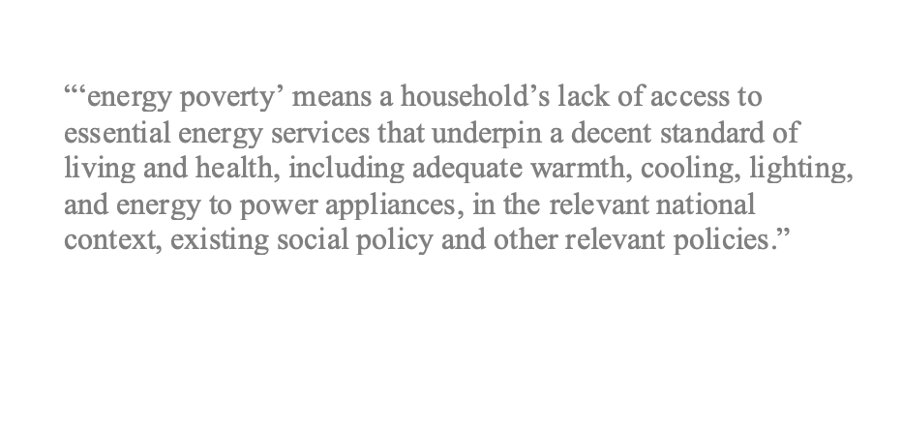1/11 Yesterday’s #Fitfor55 launch press conference was dominated by questions about the social impact. So, I took a bit of time to look at the new measures in the package to support low-income households to decarbonise. @RegAssistProj @RightToEnergy 

2/11 First, raised ambition across the package is good for all. Effects of #ClimateChange will be felt by poorest most. Climate ambition is essential but not enough. Climate ambition must come hand in hand with commitment to address structural inequities.
bit.ly/3kmIpTB
bit.ly/3kmIpTB
3/11 The Energy Efficiency Directive is the clear winner of prize for social conscience. New provisions include first EU definition of #energypoverty. Oddly it refers to lack of access to essential services but not affordability of those services and excludes cooking needs. #EED 

4/11 The big news from #EED is a new ringfence of #EnergySavings under Art 8 (was Art 7) for those affected by energy poverty, vulnerable customers & people in social housing. I wonder why low-income households were not included. @SocialwattH2020 @ensmov bit.ly/3wRfZEd 

5/11 The ringfence is calculated nationally, equal to either the % of population in #energypoverty in the NECP or, where not in NECP, an average of 3 Eurostat indicators. Results: c. 13% ringfence on average with huge variation between countries from 5% Sweden to 37% Bulgaria. 

6/11 Last on the #EED, new Art 22 recognises need to mitigate the distributional effects of policies, promotes EE for energy poor, sees ETS revenues as a source of funding, promotes technical assistance & access to funding & finance. Requires set up of a national expert network.
7/11 Next big news is new #EUETS for buildings & transport emissions. Revenues used for building decarb, low emissions transport, financial support to mitigate the price impact. BUT not additional–if MSs have policies or funding equiv to revs they need to do no more. Unfathomable 

8/11 50% of revenues ringfenced for vulnerable households, vuln micro-enterprises and vuln transport users through #SocialClimateFund. 25% of the revs captured as EU own resources = €72.2bn 2025-32, and MSs match fund up to total of €144.4bn. €20.6bn a year. Is this enough?
9/11 €20.6bn a year = €230 for each EU citizen in 20% lowest income bracket or total €1,600 per low-income person. May be enough to offset the price impact if handed back in financial support but far from enough to also renovate homes & decarbonise private & public transport.
10/11 Access to the fund by MSs is based on this very complex calculation – the top recipients are Poland (18%), France (11%), Italy (11%), Spain (11%), Romania (9%), Germany (8%). 



11/11 Too little too late. The CS Fund is too small for its aims: to offset the impact on bills AND #decarbonise buildings AND transport for households AND SMEs. It comes too late: dispersal starts mid 2025, ETS price begins 2026. No time to decarb first.
bit.ly/2TafKWM
bit.ly/2TafKWM
• • •
Missing some Tweet in this thread? You can try to
force a refresh













